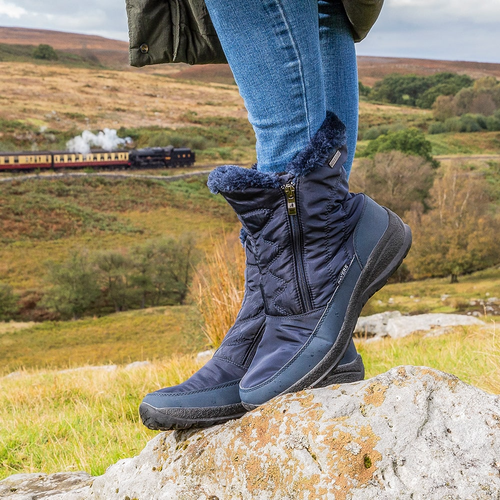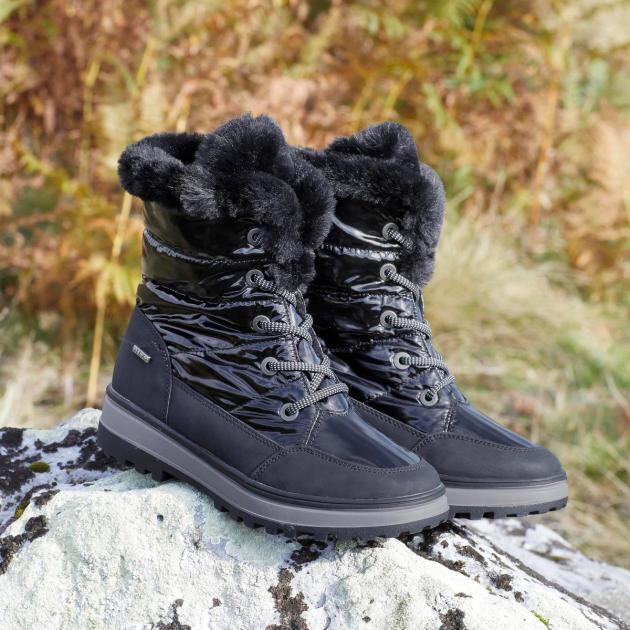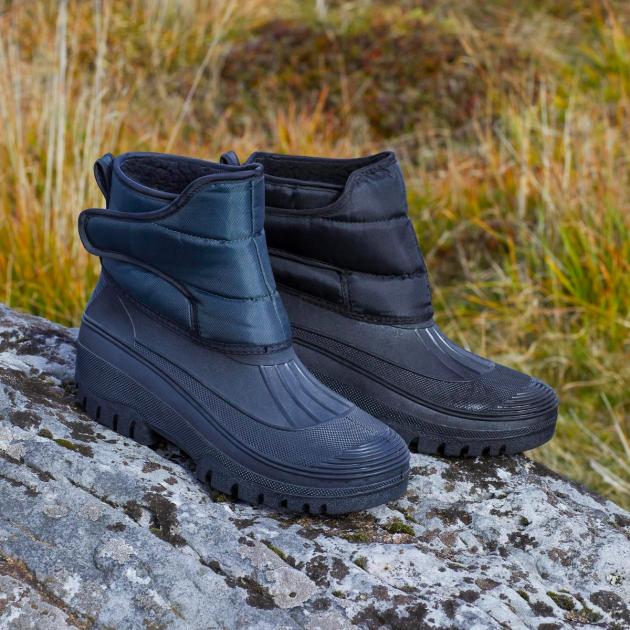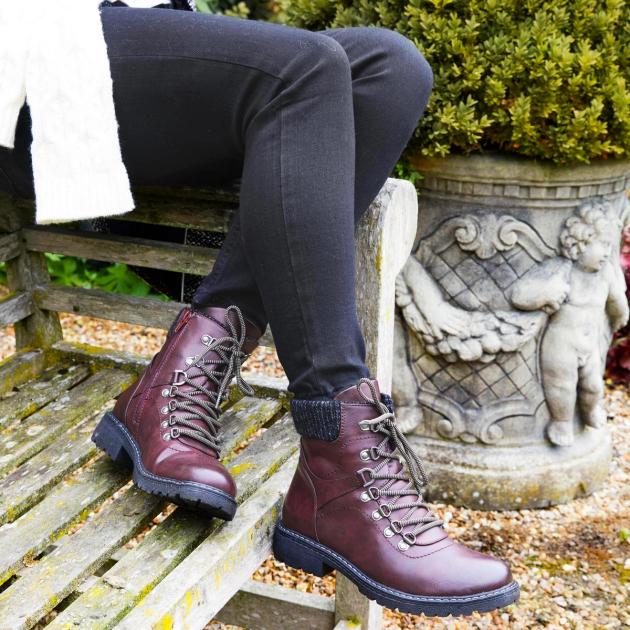
The Shoes to Wear in Snow
22 October 2021
The Great British weather is so unpredictable, snow days always seems to catch us by surprise and we never seem quite prepared to deal with the disruption that bad weather brings.
As much as we hate to admit it, it’s getting colder. The heating is on, and we’re making full use out of our slippers once again. So, now’s a better time than any to prep your wardrobe to brave the unpredictable weather by investing in the best shoes for snow and ice.
With our need-to-know guide of winter boots you’ll always be prepared to face spells of bad weather, no matter if snow, wind, or rain is forecast. From the best walking shoes for snow to all-essential wellies and snow boots, this line-up will ensure you stay warm and look cool when it comes to styling out arctic conditions.


What are Snow Boots?
Snow boots are specially designed footwear crafted to provide warmth, comfort, and traction in cold, snowy, and icy conditions. Distinguished by their insulated lining and waterproof or water-resistant exteriors, snow boots are essential for keeping feet dry and warm during the chilly winter months.
Constructed to endure the harsh elements, these boots often feature robust, non-slip soles to offer enhanced grip on slippery surfaces, ensuring safety and stability even in the most challenging weather conditions. The upper part of the snow boots is typically made from weather-resistant materials like leather, nylon, or synthetic blends to prevent snow and moisture from seeping in.
Functionality and style harmonise in the design of snow boots. They come in an array of styles and designs, catering to both outdoor enthusiasts braving the snowy terrains and those seeking comfort and warmth for everyday use. From the aesthetic allure of fur-lined cuffs to the practical inclusion of adjustable laces or straps for a customised fit, snow boots are as diverse as the needs of those who wear them.
In essence, snow boots are your trusted allies during the winter season, engineered to offer optimal warmth, dryness, and traction, ensuring that the cold weather doesn’t deter your steps, whether you're navigating snowy paths or simply stepping out for a stroll in a winter wonderland.
What Kind of Shoes are Good for Snow?
As the winter season unfolds, equipping yourself with the right footwear is crucial for braving the chilly and often unpredictable weather with confidence. Snow boots, waterproof walking boots, and wellies have become winter essentials, promising to offer a sanctuary of warmth, comfort, and dryness against the biting cold and damp conditions.
However, not all winter footwear is created equal. The distinction in staying comfortably warm or dealing with damp and cold feet often lies in the meticulous selection of shoes or boots that are crafted with specific features to counter the adversities of winter. These features ensure that each stride taken amidst the snow or rain is secure, comfortable, and undisturbed by the external environment. Let’s delve into these pivotal details that elevate the functionality and comfort of snow footwear, making them indispensable during the frosty months.
Gripped Soles
In snowy conditions, one of the paramount features to look for in shoes is gripped soles. A robust, well-textured sole provides the necessary traction to navigate slippery, icy, and snow-covered paths with confidence. Shoes with soles made from materials that offer a good grip, like rubber, can significantly reduce the risk of slips and falls. The intricate patterns and deep treads on the sole help in firmly gripping the surface, ensuring stability and safety during winter walks.
Insulated Linings
Warmth is a non-negotiable aspect when choosing shoes suitable for snow. Insulated linings play a critical role in trapping heat and maintaining a warm interior environment for the feet. Materials like fleece, shearling, or thermal insulation are commonly used to keep the cold at bay. Insulated shoes ensure that even in the biting cold, your feet remain warm and snug, allowing you to venture outdoors without the worry of frosty toes.
Waterproof
Snowy terrains call for footwear that can resist moisture effectively. Waterproof or water-resistant shoes are essential to keep the feet dry amidst snow and slush. These shoes are crafted with materials that repel water or are treated with special coatings to ensure water resistance. Dry feet not only contribute to overall comfort but also prevent conditions like blisters and frostbite, making waterproofing a crucial feature in snow-appropriate footwear.
Adjustable Closures
The adjustability of closures on snow boots is another essential feature that caters to both comfort and function. Shoes equipped with lace-up fronts, buckles, or Velcro provide a customised fit, ensuring that the boots snugly encase the feet and minimise the ingress of snow. Adjustable closures ensure that the insulation is effective and warmth is retained, enhancing comfort during prolonged exposure to cold environments.
Breathability
While keeping the cold out, it’s equally essential for footwear to maintain an adequate level of breathability to ensure comfort. A shoe that allows for air circulation prevents the build-up of moisture inside, reducing the risk of odours or fungal infections. Materials that offer both insulation and breathability are ideal, striking a delicate balance between warmth and ventilation.
Lightweight Design
Despite the incorporation of various features to combat the snow, ensuring that the boots are lightweight enhances comfort and mobility. A pair of boots that doesn’t weigh you down makes manoeuvring through the snow less cumbersome and more enjoyable. It combines the essential protective features without compromising on ease of movement and comfort.
Can Leather Shoes Be Worn in Snow?
Leather footwear undoubtedly adds a touch of sophistication and durability, but when it comes to snowy conditions, a bit of caution is necessary. Naturally, leather possesses a resilient character, but elements like moisture, cold air, and salt can be detrimental, causing the material to stain, dry, or even crack over time.
However, donning leather in a snowy landscape is not an absolute no-go. With proper care and precautionary measures, leather shoes and boots can still be your companion in the chilly weather. It's all about equipping them with the right armour to fend off the harsh winter elements.
Specialised leather care products and routine maintenance can significantly enhance the leather’s resistance to moisture and cold. Treating your leather footwear with waterproofing sprays and conditioners preserves its aesthetic appeal and bolsters its defence against snow and salt. So, while leather may not be the first choice for snowy escapades, with a little extra care, they can still step out in style, unscathed by the winter’s harsh embrace.
How to Make Shoes Snow Proof
Making shoes snow-proof involves a few essential steps to ensure that they're protected and capable of withstanding the wet, cold, and often slushy conditions typical of winter weather. Here's a concise guide:
1. Choose the Right Material:
Select shoes made of weather-resistant materials, or treat your existing ones with protective sprays. For leather shoes, a waterproofing spray or wax is essential to prevent moisture seepage and salt stains.
2. Seal Seams:
Ensure the seams of your shoes are sealed. You can use a sealer specifically made for shoes to prevent water intrusion through the seams.
3. Waterproof Sprays:
These are a go-to for making various shoe materials resistant to water. Apply a layer before the snowy season begins and reapply as directed to maintain effectiveness.
4. Proper Insulation:
For added warmth, consider adding insulating insoles. These will keep your feet warm, especially in deep snow conditions.
5. Routine Maintenance:
After exposure to snow and slush, clean your shoes promptly to remove moisture and salt, which can damage the shoe material over time.
6. Utilise Boot Trays and Racks:
Place your shoes on these to allow them to air dry. Avoid direct heat sources like radiators as they can cause materials to dry out and crack.
7. Test the Waterproofing:
Before heading out, it's wise to test how well the waterproofing works. It ensures that you’re not caught off guard when out and about.
Taking these steps will significantly enhance the durability and performance of your shoes in snowy conditions, ensuring both comfort and longevity amidst the winter chill. Make it a routine to care for your footwear during this season, and they’ll be ready to step out, come snow or shine!
Be Inspired
Check out our latest blogs.




